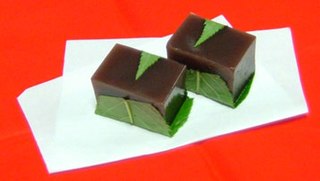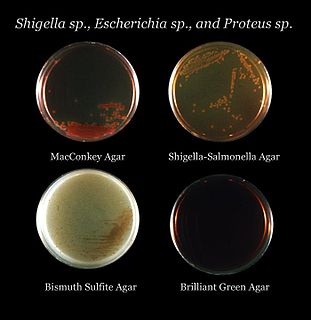Abstract
As with higher organisms, lower organisms also depend on nutrition for their survival. As a result, many microbiologists have proposed various sources of nutrition for proper microbial growth. Most nutrient media consist of animal products, the use of which is considered unethical by some. Here, an attempt has been made to substitute for animal products with some plant products.
The medium was prepared in two sets; one was autoclaved before pouring, while the other was heated to around 60 °C to conserve the proteins, which might have denatured at a higher temperature. The results obtained were very satisfactory; solitary colonies were observed in the plates with the autoclaved agar, while the heated agar gave a larger surface area of E. coli.
The above-mentioned plants were taken for this experiment due to their biochemical contents and the contents of ordinary agar. In this recipe, the chick pea replaces peptone; for a protein source, green gram replaces beef extract; for another protein source, carrot replaces yeast extract. All these plants contain proteins and carbohydrates, along with other essential biochemicals in sufficient amounts.

Agar, or agar-agar, is a jelly-like substance, obtained from red algae.

Bdellovibrio is a genus of Gram-negative, obligate aerobic bacteria. One of the more notable characteristics of this genus is that members can prey upon other Gram-negative bacteria and feed on the biopolymers, e.g. proteins and nucleic acids, of their hosts. They have two lifestyles: a host-dependent, highly mobile phase, the "attack phase", in which they form "bdelloplasts" in their host bacteria; and a slow-growing, irregularly shaped, host-independent form.

An agar plate is a Petri dish that contains agar as a solid growth medium plus nutrients, used to culture microorganisms. Sometimes selective compounds are added to influence growth, such as antibiotics.

Bacteriological water analysis is a method of analysing water to estimate the numbers of bacteria present and, if needed, to find out what sort of bacteria they are. It represents one aspect of water quality. It is a microbiological analytical procedure which uses samples of water and from these samples determines the concentration of bacteria. It is then possible to draw inferences about the suitability of the water for use from these concentrations. This process is used, for example, to routinely confirm that water is safe for human consumption or that bathing and recreational waters are safe to use.

Eosin methylene blue is a selective stain for Gram-negative bacteria. EMB contains dyes that are toxic to Gram-positive bacteria. EMB is the selective and differential medium for coliforms. It is a blend of two stains, eosin and methylene blue in the ratio of 6:1. EMB is a differential microbiological medium, which slightly inhibits the growth of Gram-positive bacteria and provides a color indicator distinguishing between organisms that ferment lactose and those that do not. Organisms that ferment lactose display "nucleated colonies"—colonies with dark centers.

A growth medium or culture medium is a solid, liquid or semi-solid designed to support the growth of a population of microorganisms or cells via the process of cell proliferation, or small plants like the moss Physcomitrella patens. Different types of media are used for growing different types of cells.

Nutritional yeast is a deactivated yeast, often a strain of Saccharomyces cerevisiae, which is sold commercially as a food product. It is sold in the form of yellow flakes, granules or powder and can be found in the bulk aisle of most natural food stores. It is popular with vegans and vegetarians and may be used as an ingredient in recipes or as a condiment.
Kinetin (/'kaɪnɪtɪn/) is a type of cytokinin, a class of plant hormone that promotes cell division. Kinetin was originally isolated by Miller and Skoog et al. as a compound from autoclaved herring sperm DNA that had cell division-promoting activity. It was given the name kinetin because of its ability to induce cell division, provided that auxin was present in the medium. Kinetin is often used in plant tissue culture for inducing formation of callus and to regenerate shoot tissues from callus.

Lysogeny broth (LB) is a nutritionally rich medium primarily used for the growth of bacteria. Its creator, Giuseppe Bertani, intended LB to stand for lysogeny broth, but LB has also come to colloquially mean Luria broth, Lennox broth, or Luria–Bertani medium. The formula of the LB medium was published in 1951 in the first paper of Bertani on lysogeny. In this article he described the modified single-burst experiment and the isolation of the phages P1, P2, and P3. He had developed the LB medium to optimize Shigella growth and plaque formation.
Industrial fermentation is the intentional use of fermentation by microorganisms such as bacteria and fungi as well as eukaryotic cells like CHO cells and insect cells, to make products useful to humans. Fermented products have applications as food as well as in general industry. Some commodity chemicals, such as acetic acid, citric acid, and ethanol are made by fermentation. The rate of fermentation depends on the concentration of microorganisms, cells, cellular components, and enzymes as well as temperature, pH and for aerobic fermentation oxygen. Product recovery frequently involves the concentration of the dilute solution. Nearly all commercially produced enzymes, such as lipase, invertase and rennet, are made by fermentation with genetically modified microbes. In some cases, production of biomass itself is the objective, as in the case of baker's yeast and lactic acid bacteria starter cultures for cheesemaking. In general, fermentations can be divided into four types:

Bismuth sulfite agar is a type of agar media used to isolate Salmonella species. It uses glucose as a primary source of carbon. BLBG and bismuth stop gram-positive growth. Bismuth sulfite agar tests the ability to use ferrous sulfate and convert it to hydrogen sulfide.
Super Optimal Broth is a nutrient-rich bacterial growth medium used for microbiological culture, generally of Escherichia coli. It was developed by Douglas Hanahan in 1983 and is an adjusted version of the commonly used LB medium. Growth of E. coli in SOB or SOC medium results in higher transformation efficiencies of plasmids.
De Man, Rogosa and Sharpe agar, often abbreviated to MRS, is a selective culture medium designed to favour the luxuriant growth of Lactobacilli for lab study. Developed in 1960, this medium was named for its inventors. It contains sodium acetate, which suppresses the growth of many competing bacteria. This medium has a clear brown colour.

Brain heart infusion (BHI) is a growth medium for growing microorganisms. It is a nutrient-rich medium, and can therefore be used to culture a variety of fastidious organisms. In particular, it has been used to culture streptococci, pneumococci and meningococci, which can be otherwise challenging to grow. BHI is made by combining an infusion from boiled bovine or porcine heart and brain with a variety of other nutrients. BHI broth is often used in food safety, water safety, and antibiotic sensitivity tests.
YM Agar and Broth, is a selective growth medium with low pH useful for cultivating yeasts, molds, or other acid-tolerant or acidophilic organisms, while deterring growth of most bacteria and other acid intolerant organisms. It is Malt extract medium modified by the addition of Yeast extract and peptone.

Nutrient agar is a general purpose medium supporting growth of a wide range of non-fastidious organisms. It typically contains (mass/volume):
This bacterial growth medium was developed in 1971 for Lactococcus species isolated from milk products. It was originally called M16 medium, but in 1975 Terzaghi and Sandine added disodium-β-glycerophosphate to the medium as a buffer, and named the new growth medium M17 medium. It was later found that the addition of disodium-β-glycerophosphate inhibits the growth of many Lactobacillus species.

The N.Y.C medium or GC medium agar is used for isolating Gonococci.
In microbiology, the term isolation refers to the separation of a strain from a natural, mixed population of living microbes, as present in the environment, for example in water or soil flora, or from living beings with skin flora, oral flora or gut flora, in order to identify the microbe(s) of interest. Historically, the laboratory techniques of isolation first developed in the field of bacteriology and parasitology, before those in virology during the 20th century. Methods of microbial isolation have drastically changed over the past 50 years, from a labor perspective with increasing mechanization, and in regard to the technology involved, and hence speed and accuracy.
Propionispira raffinosivorans is a motile, obligate anaerobic, gram-negative bacteria. It was originally isolated from spoiled beer and believed to have some causative effect in beer spoilage. Since then, it has been taxonomically reclassified and proven to play a role in anaerobic beer spoilage, because of its production of acids, such as acetic and propionic acid, during fermentation











